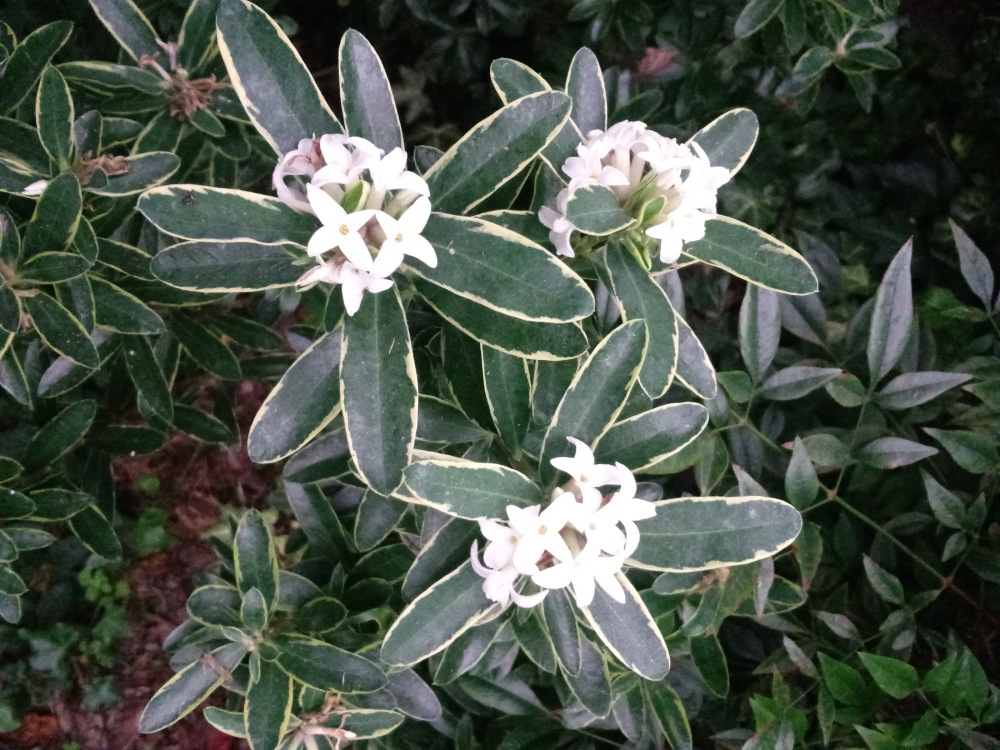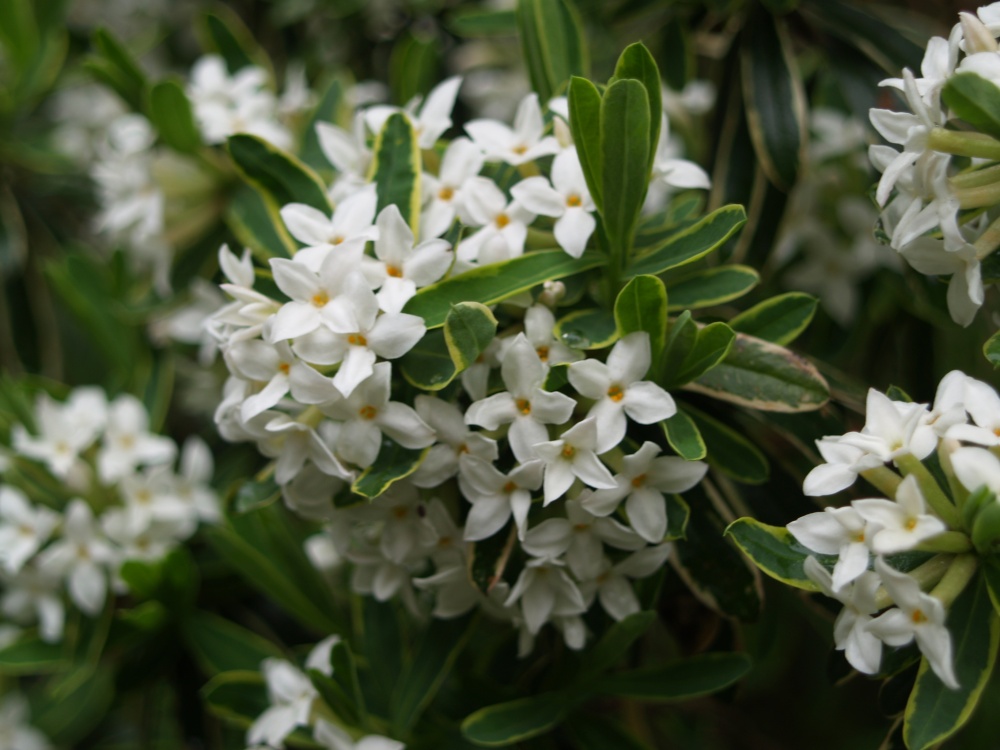I am undecided how to start with a ‘Brigg’s Moonlight’ daphne delivered in this first week of August. I am delighted that the daphne and assorted others in three and four inch pots survived their cross country journey in summer heat with no apparent trauma. This delivery was six weeks earlier than intended, a glitch of technology, and almost certainly my mistake.

The issue with this daphne is that it is tiny, as expected so I’ve no quarrel with the vendor, but I question if I should plant directly into the garden, or into a pot to grow it on until it gains more size. There is also a question of where it will be planted, and of course this should have been considered prior to the purchase.

There is an area in the front that is seemingly the perfect exposure for daphnes, with several Daphne x transatlantica hybrids (above) thriving. If there was a plan, it was to plant into this area, but where? Space is short, and certainly I don’t want this prized (and expensive) daphne to be shoehorned into too small a space where it might be overwhelmed in a few years. Also, ‘Brigg’s Moonlight’ is the reverse variegation of the somewhat finicky ‘Carol Mackie’ (below), so in addition to showcasing this fine variety, its sunlight exposure and drainage must be as ideal as possible so it’s not lost.

My concern with planting a daphne so small is that it could easily be forgotten about until it’s too late (I’ve been know to do this, more than a time or two). In this part of the front garden daphnes grow with vigor, but what about this last half of summer? In the ground, I expect ‘Brigg’s Moonlight’ might double in size before frost (from three to six inches tall), but that’s if it’s watered.
There are also concerns if it’s potted. A variety of Japanese maple, hellebore, and toad lily seedlings have been potted for months, but are regularly saved at the last moment after weeks without water. So, there’s risk in whichever direction.
Daphnes are reputed to be difficult to move, and yes, I’ve killed a few that weren’t properly nurtured after planting. After a long search for a larger ‘Brigg’s Moonlight’, I’ve finally settled for this tiny one, so it needs to live. In any case, there’s no time to dawdle. Thunderstorms are forecast for tomorrow, so I must hurry along with this decision to take advantage.
I vote plant it. Maybe you can protect it and demarcate it with something (tomato cage?).
I thought Daphne hated having their roots disturbed and the secret to them was to start them small in the ground? Where’d you get this from?
After an evening going back and forth, I planted it at the dripline of a dogwood in front with the same half day sun as other daphnes. I anticipated a thunderstorm that didn’t amount to anything, so I’ll have to watch it for a few weeks. Long ago, I saw much larger ones at Brigg’s Nursery in Washington. Sometime after they turned to doing only liners. Most of the rhododendrons and mountain laurels grown on the west coast were tissue cultures from Brigg’s at one time. I bought this one from Edelweiss in Oregon. Every year I’m in their neighborhood, on their street, but have never stopped in since I’m there shopping for larger plants.
Wow! Daphne has not been easy for us. We grew it at the farm years ago. I now work with a few in the landscape. They worry me. I know they don’t like to be potted, but I think I would want to monitor such a small specimen very closely, so would be inclined to keep it potted. With such minimal chlorophyll in the foliage, I would think that this cultivar is even more sensitive than others. I don’t mean to have such a bad attitude about it. I just worry about daphnes.